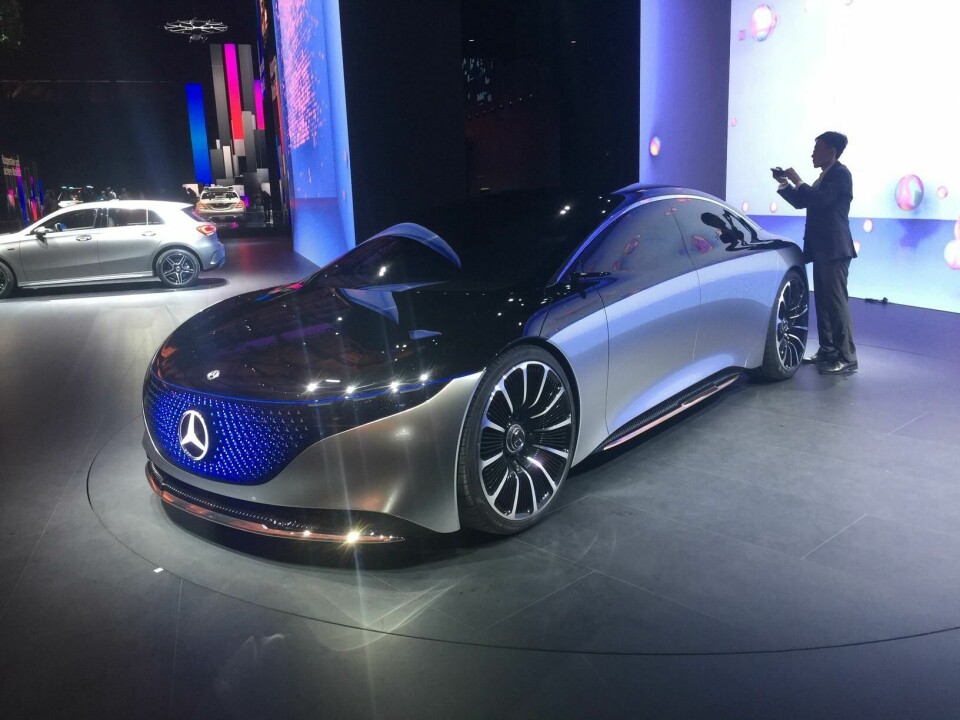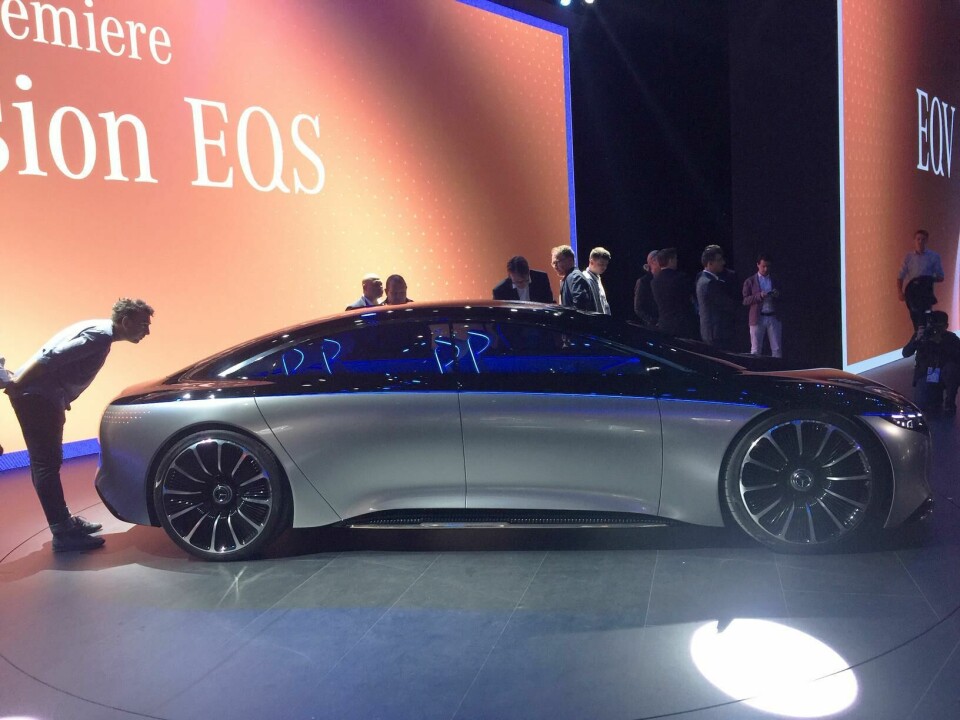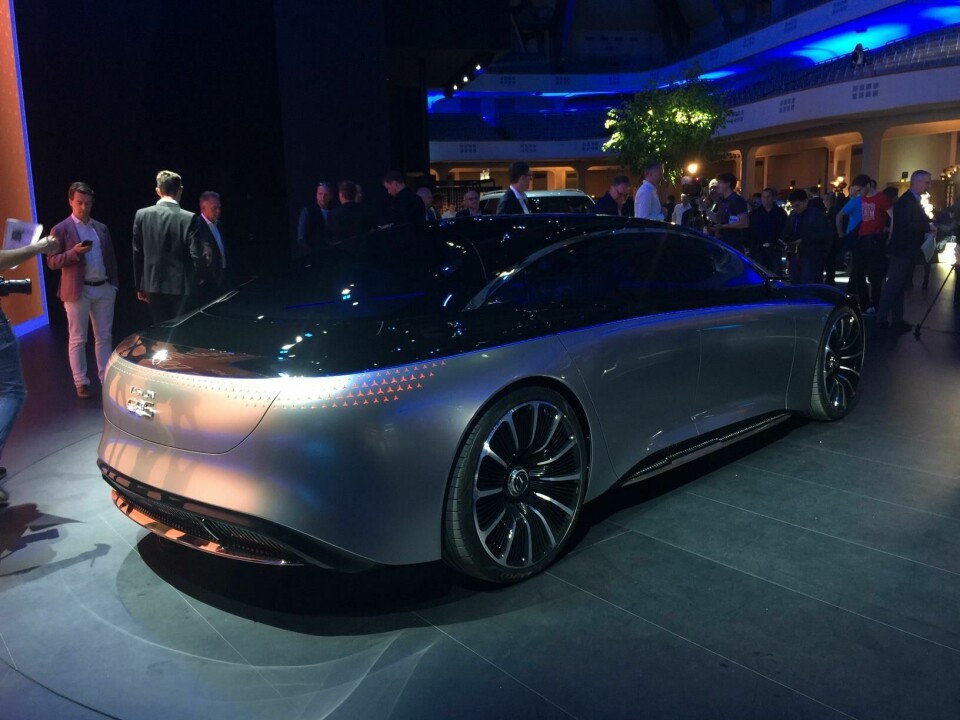
Frankfurt 2019: Mercedes’ Vision EQS
Previewing the future flagship of Mercedes-Benz’s EV range – which they believe can coexist peacefully alongside combustion cars
The all-electric Vision EQS concept limousine was Mercedes’ flagship unveil at the 2019’s Frankfurt show. It’s also significant as the first design on a new electrical architecture which will spawn other premium EV models as the firm moves to become CO2-neutral by 2039.
Car Design News had a one-to-one chat with overall design boss Gorden Wagener, who explained the new EQS proportions and why a regular S-Class will still sell alongside it. “This is the first time we have been able to design a purpose-built EV, but the problem of electric cars for a designer is the six inches extra height for the battery pack,” he told CDN. “Therefore, we started with the inspiration of the F 015 concept. Because the EQS is more of that ‘cab-forward’ style, we call it a ‘one bow’ design and the advantage of that is you can get really straight, fast lines that make the vehicle look very low, sleek and aerodynamic.”

Wagener said the EQS is a little taller than the current S-Class, but doesn’t appear so due to its long wheelbase – “it’s pretty much the length of a short-wheelbase S-Class at 5.10m but offers more interior space than a long-wheelbase version” – and also because of its good (24-inch) wheel-to-body relationship. While he conceded the wheel size would reduce a little for production – 2022 is a fair bet for that date – Wagener also reckoned that the Vision EQS is 80% true to the final car on both the outside and inside.

The full-volumed exterior body is very smooth-surfaced and clean, with hundreds of embedded light details on each side of the front three-pointed star and wrapped around the rear to add visual interest, and has a two-tone paint job (gloss black above, silver below), for contrast. “Everybody is still putting slashes and creases on the sides of their cars while we do simple and clean designs – which in our view, are more difficult to do, but more sophisticated. We vary that for all our luxury cars, but the EQ models should be the most progressive, for example, on the EQS we kind of ‘melted’ the windows into the shoulders to make the design even more seamless.”
Wagener also explained why the full-electric limo will sell alongside the conventionally powered S-Class, at least for now. “We own the S-Class segment and Mercedes is about the S-Class. So why would we kill our ‘best horse’? The EQS gives us an opportunity to target other customers we don’t have yet without harming our current portfolio. That’s why it is so different.”
The EQS’s striking white interior – with a distinctively floating full-length central spine leading forward to a diagonally upward-angled centre console – also appeared to be fully formed as we peered through the concept’s windows. But its doors remained firmly locked and Wagener wasn’t prepared to open them, as he concluded with a chuckle and a knowing smile: “We still have some surprises on the interior. That’s why we’re not showing everything today.” That will come later at the Tokyo Motor Show in late October.




















